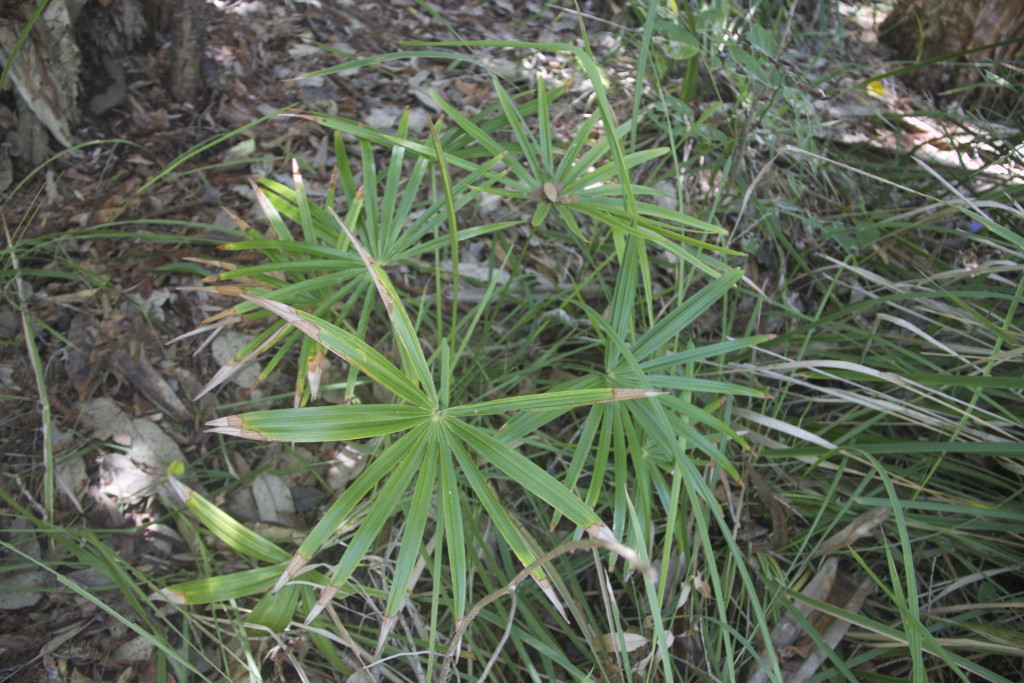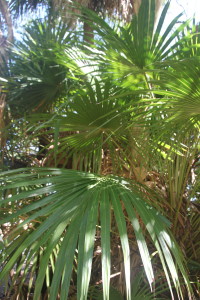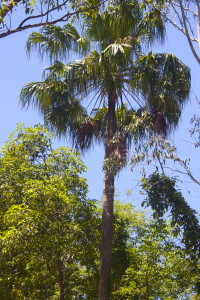A very slow growing single trucked palm eventually growing to 20-30 m. Cabbage Palms grow in the rainforest, wallum woodland and wet eucalypt forest. The leaves have segments that join at the base giving them their round fan-like appearance. Leaves can grow to 1.8 m in diameter in a mature plant. They are glossy green with spiny stalks.
A hardy plant, the Cabbage Palm tolerates wind and salt, but does best in a damp, semi shaded, sheltered area. It also grows in a pot outside or indoors in a brightly lit room.
Before the trunk grows high, with such large leaves the palm can take up 2-5 m in the garden. However it takes a long time.
What’s in a name? The central new shoot of Livistona australis can be eaten, hence the name “Cabbage Palm”. Don’t try it though; you will kill your plant.
Did you know? There are only four palms native to this area. Of the four, the two featured in this series are readily available at native nurseries.
See also Picabeen Palm 

The Cabbage Fern at three different stages of maturity
This article is part of our Gardening with natives series.



Thanks for the very useful article. I think we may have 2 of these in our garden and the fact that they are so slow growing makes it more likely. The one at the back is over 2 m tall, probably having grown about a metre in the 30 years we have lived there so it would be about as old as the house. We will take more care of it now that we know what it is. The one at the front is self down and only a few years old.
We have a property in Mackay with a cluster of these once the pepper trees were pulled out and one was estimated to be close to 120 years old. I’d love to get someone that in that field to confirm there actually height. I believe they would have to be older ones considering there all together in one random spot growing
Thanks, Shelley for your input and for removing a very environmentally damaging weed tree. How wonderful to find that cluster and release it from the pepper trees. We are currently working to eliminate peppers in the swales on Noosas eastern beaches where there are small patches of paperbark forests which is an ecosystem classified as endangered (regional ecosystem 12.2.7). Best wishes Jude